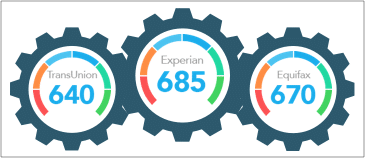If you have a debt that becomes seriously delinquent, the lender may decide to sell it to a collection agency. This debt then becomes a collection account and will be noted as such on your credit report. Collections accounts will normally stay on your credit report for seven years from the original delinquency date and can do significant damage to your credit.
You may be able to get a collections account removed before that seven-year period is up, but you will probably have to pay the debt in full and even then you will have to put some effort into getting the account removed from your credit report. If possible, try not to let an account go into collections in the first place.
How Does an Account Go into Collections?
If you don’t make any payments on a loan or credit card bill, the original creditor may decide to sell the account to a collection agency. This usually happens 90 to 180 days after the account first becomes delinquent, which is when you first missed a payment and did not subsequently bring the account up to date.
You will usually receive notices and calls seeking payment of the debt before it is sent to collection, but a creditor is not required to inform you that they are transferring your account to a collection agency.
The collection agency will usually open a new entry on your credit report. You may see both the new entry and the original account listed as separate items. The original item will usually have a note indicating that the account was transferred, and it should no longer show a balance due, because that balance is now due to the collection agency’s account.
How Long Will A Collections Account Stay on My Credit Report?
Most negative items, including collections accounts, will be removed from your credit report after seven years.
For the original debt, the seven years will be computed from the date when the original debt went into delinquency. This is the date of the first payment you missed after which the account was no longer brought up to date.
The collection agency will open a separate report to the credit reporting companies, which may appear on your credit report as a different account. This account will be removed at the same time as the original account.
In some states, making a partial payment on the collections account can restart the period for which the account remains on your credit report. In these states, the seven years would be computed from the date of your last payment.
If a creditor sues you for collection and wins, that record will appear in the public records section of your credit report for seven years from the date of the judgment.
Can I Get a Collections Account Removed from My Credit Report?
In some circumstances it may be possible to have a collections account removed from your credit report.
If the debt has already been paid, it was not your debt to begin with or another error has taken place you can dispute the account. Each of the three credit reporting companies has a dispute resolution mechanism and they are required to investigate and resolve all disputes. Try to review your credit reports regularly so that you can identify and resolve any questionable accounts as soon as they appear.
If you have paid your debt to the collection agency you may be able to ask for a goodwill deletion.
- Write to the collection agency. Don’t use the phone. Keep a copy and use registered mail.
- Explain the circumstances that led to the delinquency.
- Ask to have the item removed from your credit report.
There is no assurance that you will succeed, but it’s worth trying.
Some collection agencies may agree to remove the collections account from your credit report if you pay the debt in full. It may even be possible to get a collection agency to settle for partial payment and remove the account from your record, though this will be more difficult. These are called “pay for delete” agreements.
Get a written commitment to remove the account from your record before making any payments. Even with a written commitment you may need to follow up and apply pressure to get the collection agency to remove the account.
Even if the account is not removed from your credit report, payments that you make should be reflected in the balance listed on the account. Collection agencies may not report payments on time or at all, so you should check and follow up if they are not reported. Some scoring models give a lower weighting to collection accounts that have been fully paid and some do not consider them at all.
Even if you succeed in getting a collections account removed from one credit report, it may not be dropped from another. There are three credit reporting companies – Experian, Equifax, and TransUnion, and they each have different policies. You can try to dispute the account with the companies that are showing it, but they are not required to remove the entry unless it is inaccurate.
Collection Accounts and Medical Debt
Medical debt has emerged as a major problem for many Americans. In 2015 the three credit reporting companies agreed on a National Consumer Assistance Plan designed to improve the accuracy of credit reporting. One of the features of this plan is a new system for reporting medical debts.
Under the new plan, medical debts are not reported until after a 180-day waiting period, to give insurance payments time to be applied. Credit reporting companies must remove reported debts that have been covered by insurance. Some newer credit scoring models have downgraded the impact of medical debt on credit scores.
How to Avoid Collection Accounts
It’s easy to assume that if you can’t pay a debt there is no way to stop it going into collections. This is not always the case. Collections accounts can do serious harm to your credit and once they are on your report it is difficult to remove them. You should make every possible effort to avoid them. Here are some ways to do it.
- Never ignore a notification of an overdue payment. Always respond with an explanation for your lateness. If possible, make a partial payment.
- Take the initiative and contact your creditor as soon as you know you will miss a payment. Offer to pay what you can and set up a payment plan.
- Look into hardship plans. Many creditors, especially credit card companies, have hardship plans designed to help customers who are unable to pay because of medical conditions, job loss, natural disasters, or other events beyond their control. Ask your creditor.
- Offer a settlement. Sometimes a creditor will be willing to accept less than the total amount you owe, especially if you’re offering more than they would get from selling your debt to a collection agency. The account will be noted on your credit report as settled and that can harm your credit, so this is a stop to take when there are no other options.
Remember that your creditor does not want to sell your account to a collection agency for a fraction of its value. They would rather have you pay it off. If you can give them a reason to believe that you’re trying to meet your obligations, they are likely to work with you.
Collections Are Not Forever
A collections account will not follow you for the rest of your life. Its impact will be reduced over time and it will drop off your account in seven years.
If the collections account is the consequence of an error, you can file a dispute and request immediate removal of the account from your credit report. If you can pay the account in full you may be able to get the account removed earlier, and even if you can’t get it removed its impact on your credit may be reduced.
If you think an account is about to go into collections, you may be able to prevent that from happening by negotiating with your creditor.
Collections accounts can do serious damage to your credit. Avoid them if you can. If you can’t avoid them you may have to wait, but after seven years that account will disappear from your credit report.





